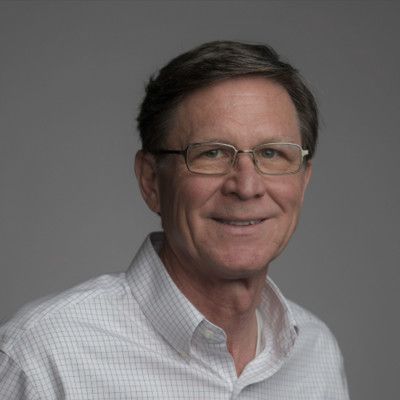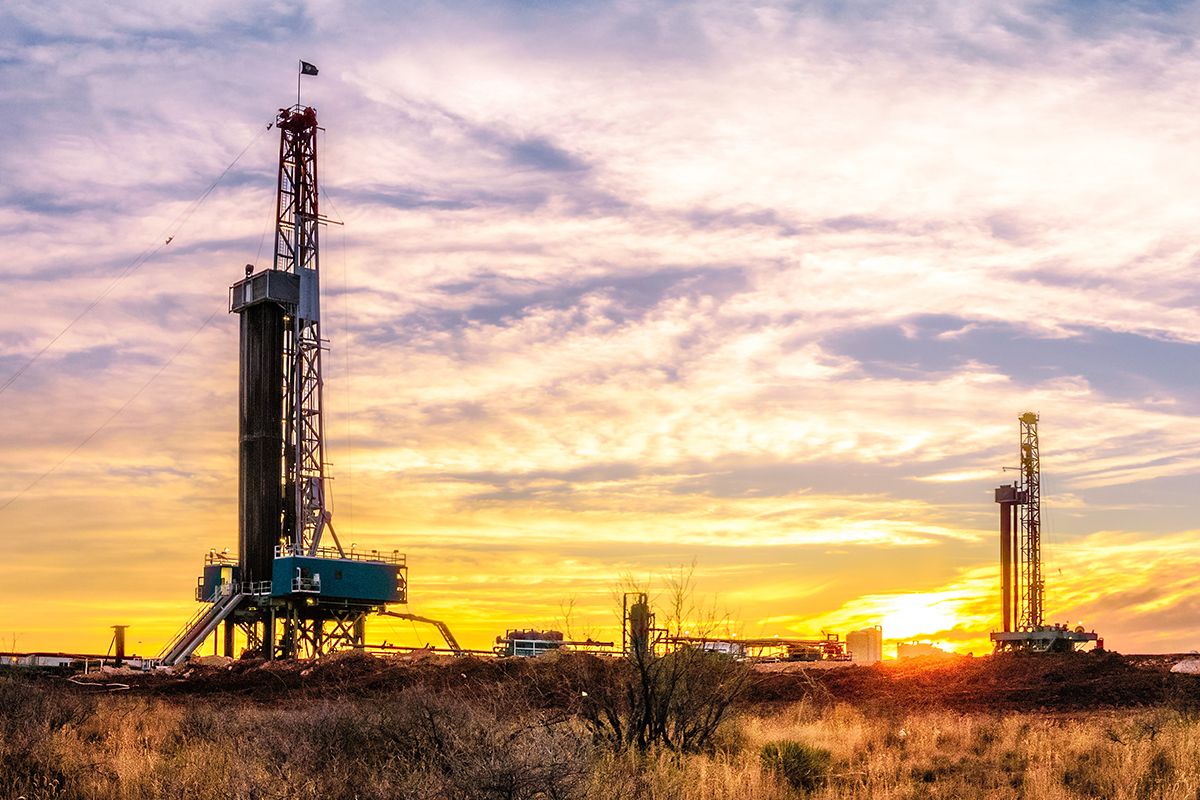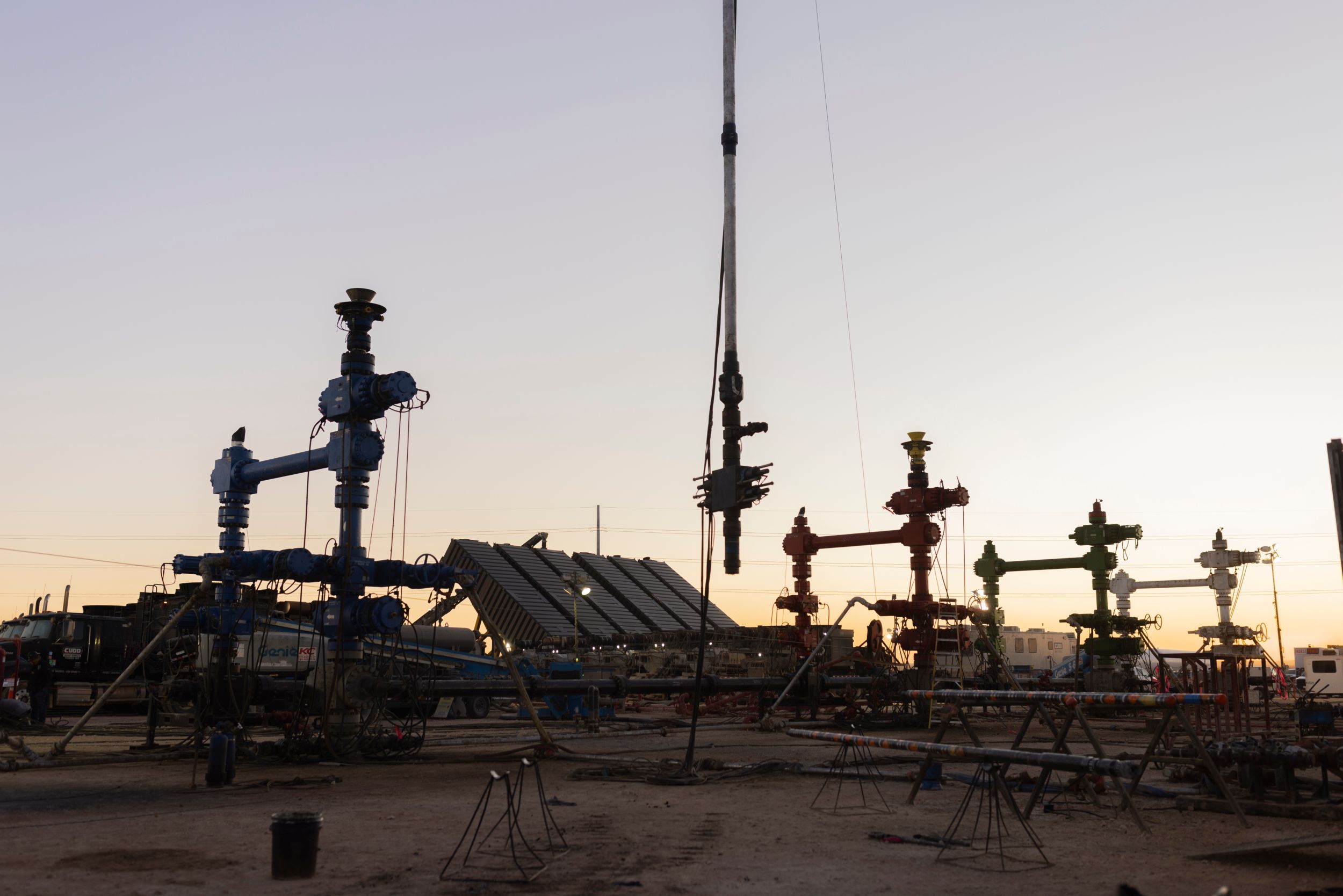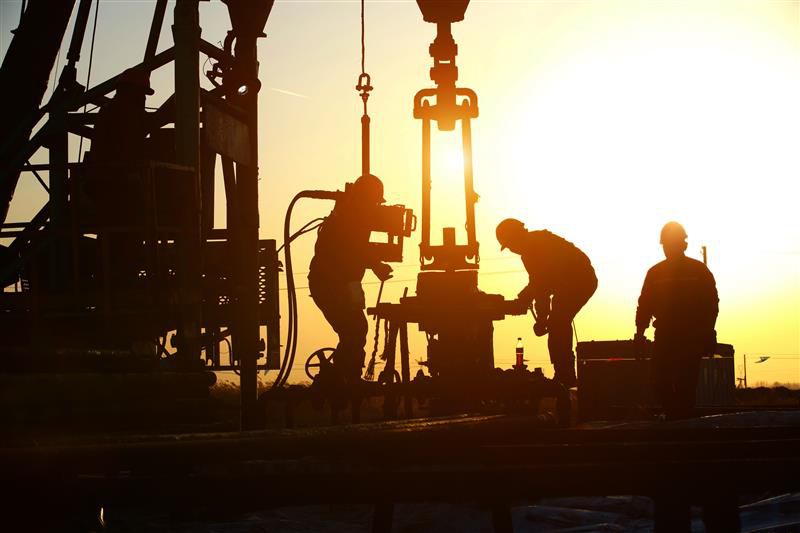00:00:03 Jenny Shafer
This episode of the Energy Pipeline is sponsored by Caterpillar Oil and gas. Since the 1930s, Caterpillar has manufactured engines for drilling, production, well service and gas compression. With more than 2100 dealer locations worldwide, Caterpillar offers customers a dedicated support team to assist with their premiere power solutions.
00:00:28 Russell Stewart
Welcome to the Energy Pipeline Podcast with your host, Russell Stewart. Tune in each week to learn more about industry issues, tools and resources to streamline and modernize the future of the industry. Whether you work in oil and gas or bring a unique perspective, this podcast is your knowledge transfer hub. Welcome to the Energy Pipeline. Hey everybody. Thanks for listening. And thanks to Caterpillar Oil and Gas. Their sponsorship of this show is just one of the many ways Caterpillar significantly supports the oil and gas industry. And today's show is another example of this as I have as my guest, Miss Jenny Schaefer. Jenny, thanks for coming on the show.
00:01:11 Jenny Shafer
Yeah, absolutely. I'm so glad to be here today.
00:01:13 Russell Stewart
Well, Jenny, you are the global account manager, oil and gas for Caterpillar's remanufacturing division, is that right?
00:01:23 Jenny Shafer
That's right, yes. I've been with Caterpillar for over 20 years.
00:01:27 Russell Stewart
Wow.
00:01:28 Jenny Shafer
And you know, yeah. I spent 15 of those years focused in the oil and gas aftermarket where I worked very closely with dealers and our customers to really better understand their challenges that they face in the field every day. And that was an easy transition over to Cat Reman. Whereas you mentioned, I serve as the global account manager. So my role is really about connecting the dots between what our customers need and how we can deliver Cat Reman solutions. Solutions to meet their needs and their challenges.
00:01:57 Russell Stewart
Well, one of the reasons I wanted to have you on. Excuse me, One of Your hashtags for LinkedIn is called rethink Reman and it says our solutions help our customers build a better, more sustainable world. And when I saw that more sustainable world, that really caught my attention. I'm. I've told this story, actually, I think I've told it on my HSE podcast. I'm not sure I've told it on the Energy Pipeline podcast, but I was the moderator at a pretty significant. I'm not even going to say what kind of conference, except to say it was. Let's just say it was a very environmentally friendly conference. And we were talking about things like methane reductions or mitigation and that sort of thing. And I had to moderate this panel and I had these three people on there and we got to talking about it and I said, look, the oil and gas industry is not the problem with the environment. The oil and gas industry is going to be the solution to the environment. And as I've told people before, when I said that if looks could kill, I wouldn't be here right now, they couldn't believe what I was saying. But I have people on my shows all the time where it's the oil and gas industry who's out there leading the way in making a more sustainable world. And that's what you guys are doing, if I understand. And that's what I want to talk to you about. And that is how remanufactured, I guess. Is it remanufactured parts? Is it remanufactured engines? What are we talking about here?
00:03:47 Jenny Shafer
Yeah, we're talking about everything when it comes to remanufacturing. We have over 8,000 parts, components could include engines in our portfolio. And you know, Caterpillar remand started over 50 years ago. The journey began back in Bettendorf, Iowa, a very small town, to provide a truck engine solution to the market. And since then we've grown to over 8,000 parts and engines in our portfolio. Caterpillar is committed to sustainability, as you know, just like our oil and gas customers. And Cat Reman really helps deliver those benefits through what we're going to call the circular economy, which I'm sure we'll get to later on in the podcast. But if you think about it, Cat products are built to be rebuilt and they're designed for multiple lives, which all contribute to helping our customers build a better, more sustainable world.
00:04:41 Russell Stewart
Yeah. And so, and getting back to my point about the oil and gas industry and the reason it's the solution to it, not not only are they doing the sustainable things, but they're finding ways to make it economical. And that's what you have to have it. Just whether you like it or not, there has to be cost benefits to this. And so what are the cost benefits of using remanufactured parts for Cat?
00:05:11 Jenny Shafer
Yeah, that's probably the number one reason why our customers select Cat remanufactured parts because they can cost 45 to 85% of the cost of a equivalent new part. With a core returns, using Cat Reman can save customers a lot of money. Like I said, typically they cost between 45 and 85% less than the new part as long as they return the core. And that's a big deal, especially for companies looking to manage their costs without compromising their quality.
00:05:43 Russell Stewart
So this core return, that's critical to achieving these savings, what Happens if the core isn't returned.
00:05:49 Jenny Shafer
Yeah, core returns are a big part of the savings. So when a customer sends back a used component, which we call the core, it enters to the remanufacturing process. So if the core doesn't come back, it changes the game. You know, the part is treated like a new part purchase and the customer really loses the benefit of that core deposit refund, which can be a pretty significant amount. Plus it puts pressure on our own inventory and supply chain sometimes, which would require us to use new materials, which we don't want to do. That drives up the cost for us. It drives up the cost for the customer and it starts to take away from the sustainability benefits of remanufacturing in the first place.
00:06:29 Russell Stewart
Yeah, because we're talking recycling here, essentially. Right.
00:06:32 Jenny Shafer
It could be, you know, remanufacturing we like to say, is not recycling. But when you think about the circular economy, that all supports the benefit of reducing waste and making sure that we protect our raw materials and our resources.
00:06:48 Russell Stewart
And so do these remanufactured parts, do they also support uptime for oil and gas companies?
00:06:54 Jenny Shafer
Yeah, they significantly help reduce downtime, which equates to uptime. It keeps their equipment working in the field where it belongs. We like to say that with reman Cat remand components, we're providing drop in ready solutions to help our customers remain working in the field so that they are not sacrificing their, their, their uptime, which is very important for oil and gas.
00:07:19 Russell Stewart
Okay. So in a, in another life of mine, many, many, many years ago, I in high school and it was at what we called back then service stations, they don't really have those anymore, you know, where people actually went out and pumped your gas for you and washed your windshield and check the air pressure in your tires and that sort of thing. And we would actually, when we found bad tires, we would sometimes sell tires to the customers. And so we got involved in some things called retreads and retreads for tires. We didn't recommend those to people because they were like, well, they just retreads didn't equate to quality. These remanufactured parts. We're not talking about retreads here, are we?
00:08:21 Jenny Shafer
No, we're not talking about retreads. Funny you mentioned that because I do come from a very small town where even today you can still pull up and they'll pump your gas for you. So I like that. That is, provided I miss out here in Houston.
00:08:36 Russell Stewart
That is very interesting. You know, and I Meant. I meant to mention that when we. When we started to show. You're the. The global account manager, Caterpillar Oil and gas, Caterpillar remanufacturing division. And you are in Houston. And of course, we have a huge Houston. We have an international audience, but we have a huge Houston audience. So for those of you who don't know, Caterpillar's over off the Sam Houston Parkway. But, Jenny, you're not originally from Houston, are you?
00:09:09 Jenny Shafer
I'm not. I'm not. I'm from the Midwest, Illinois, where Caterpillar used to hold their corporate headquarters, which of course has now moved to Irving, Texas. But that's where I started my career and my journey with Caterpillar, and then moved to Houston to enter into the oil and gas world back in 2007. So I've been here for many years now.
00:09:32 Russell Stewart
Okay, so a small town in Illinois that still has a service station.
00:09:36 Jenny Shafer
That's right.
00:09:36 Russell Stewart
Wow. And then you come to Houston, Texas. What a. What a difference. That had to be real culture shock.
00:09:42 Jenny Shafer
It was. It was.
00:09:43 Russell Stewart
Okay, so. So how does Cat remanufactured components deliver? Like, new quality?
00:09:48 Jenny Shafer
Yeah. So, you know, we, like everything else at Caterpillar, take quality seriously. Our remanufactured components undergo rigorous test to meet, like, new performance specification. And that's really the value. That's the key indicator that separates us from the competition is we have the ability to bring our products back to, like, new specs. It's also backed by the same as new warranty, which is very important for our customers. We also hold more than 80 patents covering proprietary techniques and processes used in remanufacturing electronic assemblies, engine blocks, and advanced methods like laser cladding. So we like to say these innovations help us deliver parts that perform just like new every time it meets the same reliability and durability as a brand new component that you would get and expect from Caterpillar.
00:10:41 Russell Stewart
And did you say the warranty is like a new part Warranty? Did I hear that right?
00:10:47 Jenny Shafer
Same as new.
00:10:48 Russell Stewart
Wow.
00:10:48 Jenny Shafer
Same as new warranty. That's correct, yes.
00:10:51 Russell Stewart
So I can get a same as new warranty, and yet I can get anywhere from a 45 to 85% warranty cost reduction.
00:10:58 Jenny Shafer
Oh, we're cutting out.
00:10:59 Russell Stewart
Oh, we're. Okay, Hang on here.
00:11:02 Jenny Shafer
There we go.
00:11:04 Russell Stewart
All right, I got to make a note there. Tail production somewhere around 10:30 mark to 11 mark. We had a little glitch there. Okay, so hang on here, Jenny. What had I just said? Let's see here. Okay. I think I'm going to back up. All right, all right. So I can. Let's see here. Hang on just a second. Let's go 11. So I can get a 45 to 85% cost reduction and yet I can still get the same as new warranty. That sounds to me like a no brainer there.
00:11:47 Jenny Shafer
It is a no brainer. It really is. It really is. So yeah, because it is brought back to like new performance specification costs less, same as new warranty. It just makes sense for our customers and it helps them, it helps their bottom line.
00:12:05 Russell Stewart
Okay, so earlier you mentioned this term circular economy. Talk to me about that and why it's important to the industry.
00:12:13 Jenny Shafer
Yeah, it's so important to the industry. Remanufactured parts in general are a cornerstone of the circular economy, which focuses on eliminating wastes and maximizing the reuse of resources. And that's key. Reuse of resources. So imagine a piece of equipment that works for nonstop in oil and gas, such as pumping gas, drilling, generating power. Its story doesn't end when the job is done. And so through remanufacturing, the equipment's components are given that second life, continuing to deliver value while reducing environmental impact. And for industries like oil and gas, where reliability and sustainability are both critical, using the remanufactured components helps reduce the number of parts that would otherwise have been removed from circulation and no longer use.
00:13:03 Russell Stewart
Wow, I hadn't thought about it that way. That's very interesting. So are we seeing a rise in use of remanufactured parts or you say you guys have actually been doing this for 50 years. I'm thinking maybe this is a new thing, but it's not. Huh?
00:13:22 Jenny Shafer
It's definitely not new. It's definitely not new. No, I would say that yes, we definitely see an increase or continued use of remanufactured parts in general, especially in the U.S. north America, where it's very easy to obtain these remanufactured parts. I'd say there could be market access challenges outside of US but we are working on that every day locally to ensure that we can also meet the customer needs in those prospective countries.
00:13:54 Russell Stewart
Yeah, so you're the global account manager. So this is international in scope, huh?
00:14:00 Jenny Shafer
That's right.
00:14:01 Russell Stewart
And it's more prominent in the US but it's becoming more prominent in other parts of the country as well.
00:14:08 Jenny Shafer
I would say it is. You know, as customers are thinking about their own sustainability goals, they look at the use of Cat. Remanufactured components is one way to help them achieve that. They're also looking for fast drop in ready solutions. So the use of Cat reman versus new helps them achieve some of those benefits as well.
00:14:30 Russell Stewart
Okay, so Jenny, again, going back to another life of mine, I had teachers in school who said that I would make a good lawyer. And of course that obviously never happened. And I think one of the reasons is they say a good lawyer is supposed to never ask a question he doesn't know the answer to. I ask questions on my podcast all the time that I. I don't know the answer to. So here's, here's one. And these remanufactured parts, you have to have already had, say a Caterpillar engine, for example, and something goes wrong on the part. In order to get a remanufactured part from cad, it has to be a Cat engine originally.
00:15:25 Jenny Shafer
That's right. It's. We like to use the term like for like. So if a customer would like to replace a part or replace an engine and take advantage of Cat Reman, they would purchase a Cat Reman part number in the network through their local Caterpillar dealer. And then once they take possession of that part or engine, they could return the old part or engine, which is what we would call the core. And that does need to be like for like. So if they're taking off a component off of an engine and replacing it with a reman component, it needs to be the like for like component in order to take advantage of their, their core refund.
00:16:07 Russell Stewart
Well, so I'm going to participate here in a little shameless advertising. But folks, that sounds to me like with all the benefits of, of remanufactured parts and that sort of thing, that sounds to me like just another reason to, to buy Caterpillar originally. Huge, huge selling point there, folks.
00:16:26 Jenny Shafer
Absolutely. Absolutely.
00:16:28 Russell Stewart
Okay, so where does this remanufacturing process take place? Can you explain how that works?
00:16:34 Jenny Shafer
Yeah. So when a core is returned, it enters into the remanufacturing process where it is disassembled, it's cleaned, it's inspected, and then it's remanufactured to meet the original specifications. Again, reusing those materials help keep production costs low, which is why reman parts can be priced up to the 45 to 85% less than new parts when that core is returned. And we like to say in Cat Reman without the core, there is no reman. So it's very critical to ensure we get that core back to keep contributing to the circular economy.
00:17:13 Russell Stewart
Okay, so Caterpillar, you said they started off In. Did you say Chicago? That's where their home office was. Or somewhere in Illinois.
00:17:22 Jenny Shafer
So for Cat Reman. Cat Reman started 50 years ago in Bettendorf, Iowa.
00:17:27 Russell Stewart
Really? Okay. All right.
00:17:29 Jenny Shafer
That's right.
00:17:30 Russell Stewart
And so the. And the headquarters now are in Irving.
00:17:34 Jenny Shafer
Caterpillar headquarters is in Irving. Yes.
00:17:37 Russell Stewart
Okay. These reman.
00:17:38 Jenny Shafer
But Cat Reman. Yeah, Cat Reman. So if you think about Cat Reman, I like to say by the numbers. We have seven Cat remanufacturing locations around the world. We have 10 core processing locations around the world. World. Over 4,000 Cat remand employees and like I said, over 8,000 products in our portfolio that have grown since we started 53 years ago in Bettendorf, Iowa.
00:18:04 Russell Stewart
So these multiple locations, this is where the remanufacturing process takes place?
00:18:10 Jenny Shafer
That's right. We have seven remanufacturing locations around the world. The largest remanufacturing facility in the hub or the heart of Cat Reman is located in Corinth, Mississippi.
00:18:22 Russell Stewart
Corinth, Mississippi. I've never even heard of Corinth, Mississippi.
00:18:25 Jenny Shafer
I don't think I did either until I joined Cat Reman. But that is where we are located. That's where the majority of the corps takes its first stop, is in Corinth, Mississippi, where it then can get disassembled and cleaned and inspected. And going through that remanufacturing process that I mentioned.
00:18:46 Russell Stewart
Well, Denny, I really, as I said at the beginning, I was excited to. To talk about this, to get it out to our energy pipeline audience. Just another example of how the oil and gas industry is being that sustainable partner for our environment and for our economy. So it's really been a pleasure talking to you about this and letting everybody know that this is available out there. So have I missed anything?
00:19:23 Jenny Shafer
I think you covered it pretty well. I would. The only thing that I think that we could cover are some of the key industry trends that are driving the increased adoption of remanufactured components, where we are seeing significant growth in what customers are thinking about today, whether it's sustainability in their own circular economy goals, cost efficiency and supply chain resilience, technology, technological advancements, industry specific growth strategies, and really customer confidence and market education on Cat remanufacturing in general.
00:19:56 Russell Stewart
Okay, so supply chain resiliency. Can you comment a little bit more on that? Because that's, that's a, you know, supply chain is one of those buzzwords these days.
00:20:07 Jenny Shafer
Yeah, I would say so. Supply chain. It really makes Cat reman parts and components attractive in industries who are facing those tight budgets and supply chain disruptions. For example, in gas compression, availability of remand parts is a critical factor due to the high cost of downtime. So they're taking advantage of the cost benefits of the 45 to 85% of new while maintaining the OEM specifications and warranty coverage. And they're taking advantage of a trop in ready solution that gets them back up and running much more quickly than if they were to wait for that new component.
00:20:44 Russell Stewart
Okay, so I got a Cat engine out there on my rig or I got a Cat engine out there on my production facility and something breaks and I want to get a remanufactured part. What do I do? How do I do that? Who do I call?
00:21:01 Jenny Shafer
We have. We have several ways to do that, but the Cat dealer is who a customer would want to call. First and foremost is their Cat dealer. We have several distributors around the world to support them. We also have E commerce and online methods and ways that customers can find Cat remanufactured parts. So it's very easy for them to be able to find if they have something that's broken what that equivalent remanufactured part, if available, would be for them to purchase.
00:21:33 Russell Stewart
So you just go to the website.
00:21:35 Jenny Shafer
Www.Cat.Comparts.Cat.Com is the website where they could go and locate one of the 8,000 parts that we have in the portfolio. They could also easily contact their Cat dealer who can help them find that part as well.
00:21:50 Russell Stewart
Okay, so contact the dealer or parts.cat.com we'll put that in the show note. Show Notes will also we'll put your LinkedIn contact info in the show notes there Jenny, if people want to reach out to you. And again, thanks for coming on and sharing this information. I've really enjoyed the conversation. I appreciate it. And as always to everybody out there listening, we always appreciate you you and we appreciate it when you tell your friends to listen and you post reviews on LinkedIn and we'll see you next time. Thanks for listening to oggn, the world's largest and most listened to podcast network for the oil and energy industry. If you like this show, leave us a review and then go to oggn.com to learn about all our other shows. Don't forget to sign up for our weekly newsletter. The show has been a production of the Oil and Gas Global Network.










